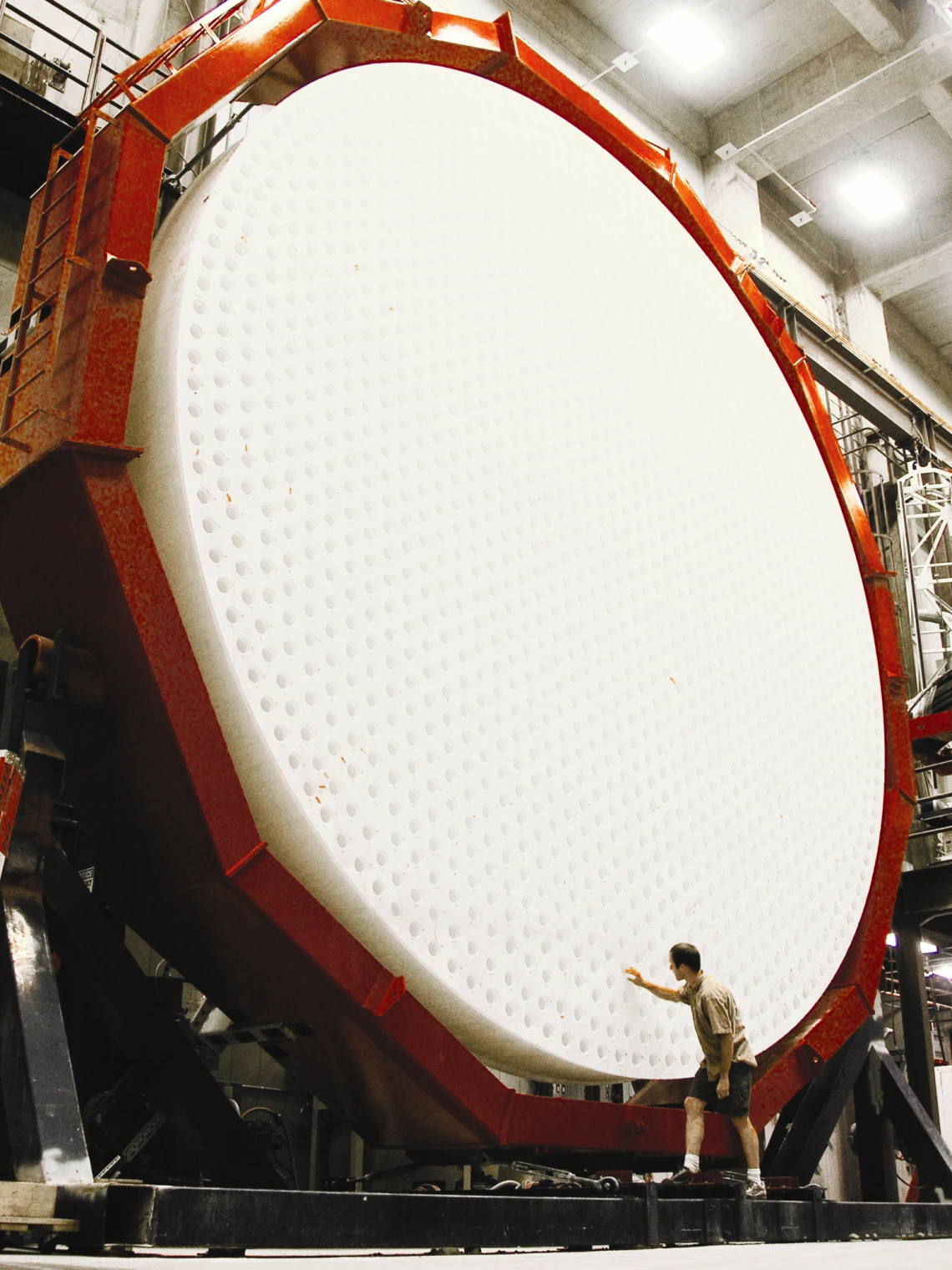Mirror, Mirror
Celebrating the 10th anniversary of Richard F. Caris’ gift to U of A astronomy.

December marks the 10th anniversary of Richard F. Caris’ $20 million gift to the University of Arizona’s astronomy department — a gift that enabled the U of A to become one of 14 founding partners in the Giant Magellan Telescope, or GMT, observatory currently under construction in the Atacama Desert of central Chile. The telescope, whose enclosure passed its final design review this past June, will be the largest of its kind in the world, not to mention a
point of pride for the U of A, whose extraordinary contributions to the field of
astronomy have always set it apart.
Caris’ path to giving wasn’t a typical one. He wasn’t an alum or otherwise affiliated with the university. “Richard was the founder of a company called Interface, which makes load cells and force actuators, including for the oil industry,” says Buell Jannuzi, the head of the astronomy department and director of the Steward Observatory. “We use his load cells and force
actuators in supporting the mirrors that we make in the mirror lab.”
Caris couldn’t figure out why he kept getting all these orders from the University of Arizona “at weird times in the year, in weird amounts.” A few calls later and Caris found himself connected to Jannuzi’s colleague and former Steward Observatory director Peter Strittmatter, and a friendship was born. “It’s a great story in that it shows how you can build connections through shared interests, not just shared institutional affiliations,” Jannuzi says.
Caris became a regular visitor. Jannuzi remembers a joint trip to the Mirror Lab — a vast facility housed under the east side of the Arizona football stadium — during a game where fan response was so enthusiastic that one of the mirrors was shaking under its testing table. “The mirror is supposed to be isolated from the vibration,” Jannuzi says. “But the stadium was shaking so much that it didn’t matter.”
Caris’ first gift was toward the Large Synoptic Survey Telescope project, but his contribution to the GMT was on another level. “Richard was somebody that was willing to go in at a stage when a project is still risky,” Jannuzi says. “There are other donors that want to be the person that finishes it. [Richard] was definitely, ‘I want to help get things started.’”
This put Caris in a distinguished line of private individuals who have helped the university realize goals that would’ve been otherwise unattainable, going back to a gift from Lavinia Steward that funded the university’s first observatory led by Andrew Ellicott Douglass more than a hundred years ago.
“We presented to Caris what it would mean to the students and faculty of the University of Arizona to be part of GMT, what it would mean to the Mirror Lab and what it could mean to the people of the world,” Jannuzi said, remembering the dinner at which he and his colleagues made their ask.
“Since the MMT [Multiple Mirror Telescope], which was built in the 1970s, we’ve been part of each of the next, successive, follow-on, next-generation projects. The Large Binocular Telescope on Mount Graham. All these projects where we’ve been involved in actually building and designing the facility, and then using it for science. So if we wanted to be part of the next generation, which is GMT, we needed his help, and he stepped up.”

